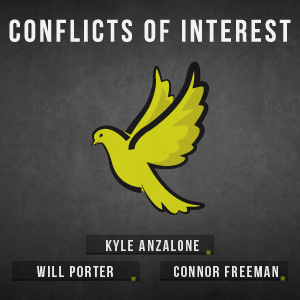Born on November 16, 1938 in Brooklyn, Robert Nozick began his intellectual life as a young socialist but ended it as one of the twentieth century’s fiercest defenders of property rights and limited government. Raised in a Jewish immigrant household, he joined Norman Thomas’s Socialist Party youth wing and helped organize the Student League for Industrial Democracy, yet his curiosity soon led him beyond doctrinaire leftism. While studying at Columbia and later Princeton, he encountered thinkers such as Ludwig von Mises, Friedrich Hayek, Milton Friedman, Murray Rothbard, and Ayn Rand, whose arguments for self‑ownership and free markets challenged his egalitarian assumptions. In the preface to his most famous book, he recalled that a long conversation with Rothbard “stimulated my interest in individualist anarchist theory” and began a process that changed his mind.
Nozick earned his PhD in philosophy at Princeton in 1963 and taught briefly at Princeton and Rockefeller universities before joining Harvard’s faculty in 1969. He developed a wide range of interests—metaphysics, epistemology, decision theory, ethics—and approached them with analytical rigor and a penchant for thought experiments. But it was his first book, Anarchy, State, and Utopia (1974), that made him a household name in political philosophy and gave libertarianism a foothold in the academy. At a time when John Rawls’s A Theory of Justice dominated the field, Nozick offered a bracing alternative grounded in the idea that individuals possess inviolable moral rights.
Nozick opened Anarchy, State, and Utopia with a sentence that set the stage: “Individuals have rights, and there are things no person or group may do to them (without violating their rights).” This assertion flows from the “fact of our separate existences.” Each person has his own plans and values, and moral theory must reflect that separateness. Nozick called rights side‑constraints: boundaries on what others may do to you. They prohibit treating people as means to social ends, no matter how lofty those ends seem. Because individuals are ends in themselves, the state may not conscript some for the benefit of others.
The first part of the book tackles the anarchist challenge. Free‑market anarchists such as Rothbard maintained that any monopoly on coercive force violates rights. Nozick agreed that coercion is morally fraught, but he argued that a minimal state could arise without trampling anyone’s rights. In a competitive market for protection, a “dominant protective association” would emerge because clients prefer reliable agencies. To protect their clients from risky enforcement methods used by rival agencies, this association could prohibit certain procedures while compensating those who lose the option of using them. Through this prohibit‑and‑compensate process, a single agency would become a monopolistic provider of legal protection and thus the state. Its legitimacy rests on the fact that it protects rights rather than violates them. Any state that does more—redistributing income or regulating personal behavior—steps beyond its warrant. Nozick argued that the legitimate state’s narrow functions are to protect against force, theft, fraud, and to enforce contracts.
The second part of Anarchy, State, and Utopia turns to distributive justice. Nozick rejects the view that justice requires a particular pattern of wealth or income. He offers a historical entitlement theory. A distribution is just if every piece of property in it has been acquired through either just initial acquisition or voluntary transfer, and if any past injustices have been rectified. To evaluate who should have what, one must look to the history of how people acquired and traded their holdings, not to whether the resulting pattern fits an egalitarian or utilitarian standard. As long as acquisitions and exchanges were voluntary and honest, the resulting distribution is just, no matter how unequal.
Nozick’s Wilt Chamberlain thought experiment illustrates the point. Imagine a society that has agreed on some equal distribution of wealth and then allows individuals to spend their money freely. If a million fans voluntarily pay twenty‑five cents each to watch Chamberlain play basketball, he will end up with $250,000 more than everyone else. This new distribution is morally permissible because it arises from voluntary transactions. To restore the original pattern, the state would have to seize part of Chamberlain’s earnings, interfering with free exchange. Thus, patterned theories of justice—whether egalitarian or utilitarian—require “continuous interference in people’s lives.” By contrast, the historical entitlement view respects individuals as separate agents. It treats taxation for redistribution as equivalent to commandeering labor because “taking the earnings of n hours’ labor” is on par with “forcing the person to work n hours for another’s purpose.”
Nozick also rejected the idea of a collective entity called “society” whose welfare can justify overriding individual rights. He insisted that there is no social entity but only “different individual people, with their own individual lives.” Sacrificing one person for others’ benefit violates the principle that each person’s life is the only life he has. Democracy, if unconstrained, merely changes a single master into “10,000 masters”; it does not solve the problem of coercion.
Nozick anticipated objections that his minimal state is uninspiring. He responded with a vision of utopia that emphasizes diversity rather than uniformity. A proper utopia, he argued, is a framework for utopias. Within the protection of a minimal state, people should be free to form and live in communities of their choosing—communal, capitalist, religious, ascetic, or anything else. “Utopia will consist of utopias, of many different and divergent communities.” No one vision is imposed on all; instead, individuals sort themselves into groups that reflect their values. The minimal state ensures that such experiments remain voluntary and peaceful.
When Anarchy, State, and Utopia appeared in 1974, it startled a philosophical community dominated by Rawlsian egalitarianism. The book won the National Book Award and was translated into eleven languages. In academia, libertarianism had been largely absent. Nozick’s book changed that, securing libertarianism a place among the standard topics of political philosophy and paving the way for younger scholars. It forced egalitarians to confront a rights‑based critique of redistribution and led to lively debates in classrooms and journals.
Outside philosophy departments, the book resonated with advocates of free markets and limited government. Its indictment of the welfare state as a form of theft and its equation of redistributive taxation with forced labor connected with movements that would later inspire the Reagan and Thatcher revolutions. Nozick’s insistence that the state may not use its coercive apparatus to compel citizens to aid others or to prohibit “capitalist acts between consenting adults” provided a moral justification for deregulation and privatization.
Yet the book also drew sharp criticism. Some anarchists argued that Nozick’s minimal state still monopolizes force and thus violates rights. Left‑liberals faulted the historical entitlement theory for overlooking structural injustices and the legacy of past wrongs. Utilitarians dismissed side‑constraints as dogmatic; communitarians accused Nozick of ignoring social bonds and civic duties. Even Nozick’s libertarian peers, including Rothbard, believed his justification of the state was a compromise. Nozick himself later admitted that his early work did not fully knit humane concerns into its fabric. In The Examined Life he wrote that the libertarian position he had earlier advocated seemed “seriously inadequate” because it neglected symbolic expressions of collective concern. However, in a 2001 interview he insisted he still identified with libertarianism and highlighted voluntary cooperation as the “core principle” of ethics.
After Anarchy, State, and Utopia, Nozick turned to other branches of philosophy. He wrote Philosophical Explanations (1981), where he proposed a “tracking” theory of knowledge: a belief counts as knowledge if a person would not hold it when it is false and would hold it when it is true. He explored personal meaning and the “holiness of everyday life” in The Examined Life (1989). The Nature of Rationality (1993) and Socratic Puzzles (1997) studied rational choice and the role of symbols in moral life. His final work, Invariances (2001), offered a theory of objective truth based on invariance under transformations and restated his commitment to voluntary cooperation and the ethics of respect. Though he ranged widely, the shadow of his early libertarianism remained: the duty not to interfere with another’s domain of choice still anchored his moral outlook.
Nozick’s libertarian synthesis influenced a generation of political theorists. Philosophers such as David Schmidtz and Loren Lomasky built on his insights about rights and voluntary exchange. Schmidtz’s Elements of Justice offers a pluralistic account of justice that treats property rights as central, while still acknowledging duties of rectification. Loren Lomasky’s work on rights and personhood shares Nozick’s concern for self‑ownership. Chandran Kukathas’s idea of a “world of plural and overlapping authorities” resembles Nozick’s meta‑utopia and has influenced debates on multiculturalism and federalism.
Economists have also drawn on his arguments. Tyler Cowen has defended market institutions using an “everyday libertarianism” that echoes Nozick’s respect for individual choices. Peter Boettke emphasises that markets operate efficiently only within a legal framework that protects private property and voluntary exchange—principles that Nozick articulated. Legal scholars such as Randy Barnett have used Nozick’s rights‑based theory to argue for a constitution that presumes liberty and places the burden of proof on government when it restricts freedom.
Even those who disagree with Nozick admit his impact. Rawlsians have responded by refining the difference principle; communitarians like Michael Sandel have highlighted social obligations but often engage Nozick’s challenge directly; egalitarians like Ronald Dworkin have devised resource‑egalitarianism partly to address the historical entitlement view. The debate has enriched political philosophy by forcing theorists to justify state power rather than assume it.
Nozick’s intellectual life exemplified the virtues he admired: curiosity, independence, and respect for others’ autonomy. As a young socialist he challenged preachers and soapbox orators with the question, “How do you know that?” and he never stopped asking it. His philosophical style—posing daring questions, offering provisional answers, and inviting critics to do better—opened new avenues of inquiry. He once remarked that philosophy is an exploratory venture rather than a crusade to convert opponents; the goal is to explain how things could be, not to impose doctrines. That ethos, together with his insistence on rights, continues to attract students to his work.
Nozick died of stomach cancer in January 2002 at the age of 63. Although he left the political arena after his first book, Anarchy, State, and Utopia endures. Its message is that moral side‑constraints define the outer limits of political power, that justice depends on the history of how wealth is produced and exchanged, and that a free society must allow diverse communities to flourish. By articulating these ideas with verve and precision, Robert Nozick transformed libertarianism from a fringe curiosity into a serious contender in political philosophy. Decades later, his call for a minimal state grounded in individual rights still challenges both egalitarians and conservatives, reminding us that human beings are not means to collective ends and that political authority must be justified to those it binds.















